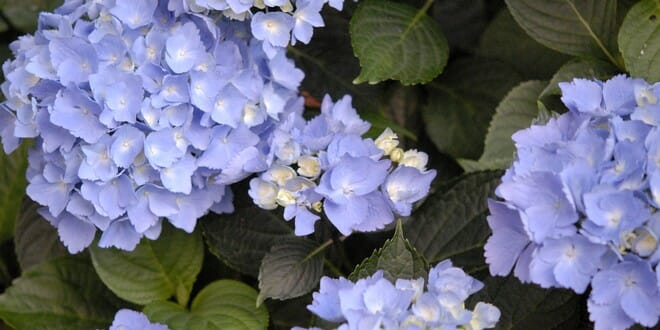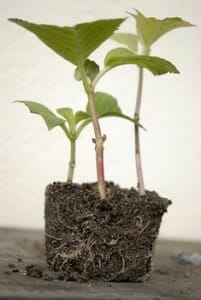
The Hydrangea is a star plant of the summer with its large flower balls or cones. Placed in partial shade, at the foot of a north-facing wall for example, it thrives there as long as it is provided with rather acidic, humus-rich and cool soil. This shrub multiplies well by cuttings but also by layering , which makes it possible to obtain and plant many Hydrangeas at a lower cost, to compose a hedge without much maintenance.
Where to take the cutting?
Using non-flowering lateral branches for cuttings will put the odds in your favor.
During the month of August, cut off the tips with a length of 20 to 25 centimeters from those young side branches, which appeared last spring, which do not bear flowers. These shoots, still green, begin to stiffen and become lignified, their color turning brown. Using pruning shears, remove all the leaves from the bottom of the cutting to keep only the top 2 or 3 leaves. The pruning tool must be clean and disinfected to limit the appearance of diseases in the pruning wound.
What growing medium to use?
Then prepare a mixture of equal parts peat, sand and heather earth. Otherwise, good garden soil can replace heather soil,
Prick your cuttings into a small pot filled with a mixture of equal parts peat, sand and heather earth. In the absence of peat, you can replace it with half sand, the young roots will develop more easily in light soil. To increase the chances of success, you can gently dip the base of the stems in a small dish filled with rooting hormone, but this is not mandatory.
Wait for new shoots

Then keep the pots in a sheltered corner of the garden (in partial shade) and water lightly from time to time (without drowning the cutting ). As soon as new shoots appear, a sign that rooting has begun, transplant into a larger pot filled with a mixture of potting soil and heather soil. The “baby” hydrangeas are then left to cool, protected from frost all winter. You can install them in their final place the following spring.
How to layer a Hydrangea?
Layering is another easy method of propagating hydrangeas . It is a question of taking advantage of the natural clump bearing offered by the Hydrangea . Over time, many branches tend to sag close to the ground under their weight while others, for lack of space, grow laterally, at ground level. At the slightest prolonged contact with the earth, these branches root themselves. It is therefore sufficient to flatten one of these low branches on the ground and then to cover the contact zone with a mound of earth.
Layering is a slightly longer technique than cuttings. Carried out in the spring, it will be necessary to wait until the end of winter of the following year (February-March) to wean these layers from the mother plant and install them in pots or elsewhere in the garden. On the other hand, the success is however optimal!
Which hydrangeas to cut?
The two methods mentioned work with all Hydrangeas , whether they are of the shrub type ( Hydrangea macrophylla – the classic Hydrangea with large balls of flowers –, Hydrangea with oak leaves, etc.) or of the climbing type ( Hydrangea petiolaris ). Cuttings are nevertheless more practical to carry out on climbing species.
